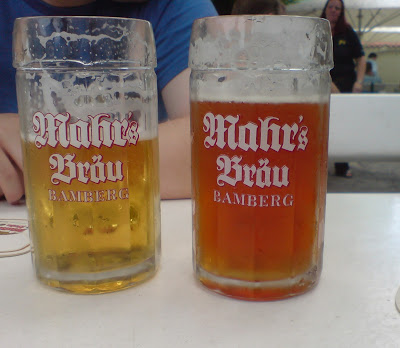It's a rarity for me to sign up to any subscription service, even one that is promoting beer, but last summer, a certain one really caught my eye. Before revealing which one, it’s worth noting that there has been a dramatic decline in the number of beer subscription services, with one outfit in particular dominating the scene. Since the demise of Flavourly, in October of last year, Beer 52 now seems to have the monopoly in this field, apart from the growing number of breweries who supply their own products, by mail order.
A much smaller number of breweries will ship out a changing section of their beers, on a monthly basis, in exchange for a fixed sum, normally paid by direct debit. During the pandemic, local independent beer café Fuggles found themselves really struggling, so owner, Alex Greig came up with the idea of FUGSCLUB a monthly beer subscription service that featured 12 beers each month, complete with tasting notes and occasional extra goodies. I signed up for the club, and during the real bad months of the COVID lockdown, was pleased to receive a selection of 12 interesting beers, delivered to my doorstep on a monthly basis.
Fast forward to 2023 when the Braybrooke Lager Club, appeared on my radar.The Braybrooke Beer Company is a specialist lager brewery situated on Braybrooke Farm. Situated on the edge of the village of Braybrooke, just outside of Market Harborough in the heart of the peaceful English countryside, the brewery was set up in 2017 by Luke, Nick, and Cam, three friends, with decades of combined experience in the food and drink industry. Braybrooke began with just one aim - to make really good lager for people who appreciate it. Over the past six years the friends have become real masters of their craft.
The group’s love for quality and fine tasting lagers came from travels in Germany, which of course is one of the best lager-brewing countries in the world. Whilst there, they met Stephan Michel, owner of the well-known and highly respected Mahrs Brau brewery in Bamberg, which was founded in 1670. Stephan put the group in touch with the best malt, hop and yeast suppliers to make great lager. Head Brewer Alexis came on board, adding to Braybrooke his experience at some of the best breweries in Europe. Making the best lagers takes a lot of work, and it starts
with the best ingredients. To source these the friends looked to Germany, and
source all their malt from that country. The malt is milled on site just before
every brew for utmost freshness, and the company also imports a range of classic
German hop varieties, directly from a renowned hop farm in Tettnang. Their
house lager yeast comes from Bavaria and is shipped overnight for maximum
quality. The final, and some say, most important ingredient is the
home-sourced, local Midlands water.
Making the best lagers takes a lot of work, and it starts
with the best ingredients. To source these the friends looked to Germany, and
source all their malt from that country. The malt is milled on site just before
every brew for utmost freshness, and the company also imports a range of classic
German hop varieties, directly from a renowned hop farm in Tettnang. Their
house lager yeast comes from Bavaria and is shipped overnight for maximum
quality. The final, and some say, most important ingredient is the
home-sourced, local Midlands water.
Braybrooke’s semi-automated, three vessel 10hL brew-house is used to turn these classic Teutonic ingredients into some of the finest lager biers, outside of Germany using traditional techniques such as decoction mashing, to create a deeper maltiness in the final beer. This is really evident in the finished products. Following mashing, boiling, and cooling, the beers are fermented at 9ºC, colder and slower than standard commercial lagers. Primary fermentation, which takes about a week, is followed by a long period of maturation at 2 to 3ºC in traditional horizontal tanks for a minimum of 30 days. That’s 6 weeks from grain to glass! This process is called lagering and it’s the most important part of making the beer, as the live yeast keeps working and the beer becomes naturally carbonated, smoother, and brighter. No fining agents are used, and no filtration takes place either, instead the beer clears naturally. In order to have total control over the entire process, Braybrooke packages every bottle and keg themselves, and holds the finished product at 4ºC in their cold store to keep the beer as fresh as possible. Every step taken results in beers that are well structured and rather complex, so with this in mind, how could I turn down the chance of enjoying some of these delicious lagers?
The chance came when I stumbled across the Braybrooke Lager Club, a community for lager lovers founded on the principle good beer brings people together and focusing purely on the best lagers around from both Braybrooke and other like-minded breweries. Members of Braybrooke Lager Club enjoy a box of 12 bottles delivered to their door every month: a mixed case of our classic core beers (including their famous Keller Lager), specials and collaborations plus guest lagers each month specially selected by the club.
Members can pause or cancel their membership at any time, but with beers this good, why would you want to? I’ve been purchasing beers from the club, for the past few months, and have not been disappointed. Below are of some of Braybrooke’s best-selling beers, with tasting notes, and illustrations, from the brewery's website.
For further information on the Braybrooke Beer Company, the beers it produces, and the Braybrooke Lager Club, please click on the links, embedded in the text.





































